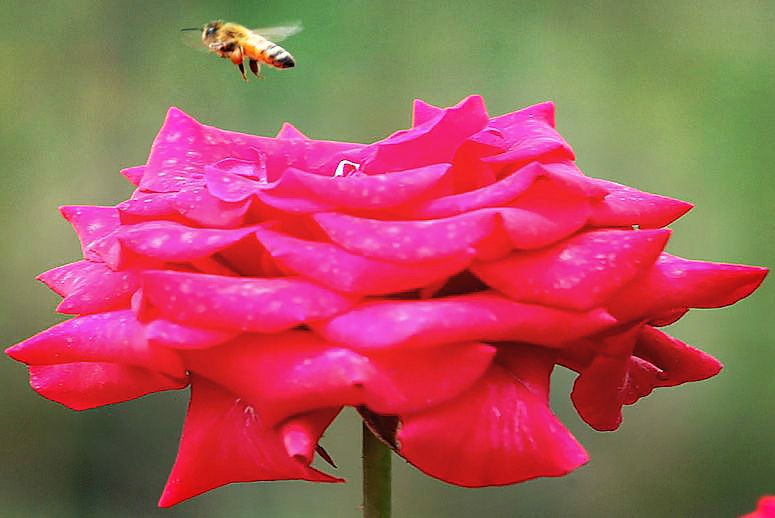New research finds that as climate change increases ozone levels, pollinators will have a harder timing finding plants that feed them.
A rose by any other name would smell just as sweet, but a rose after climate change may not smell much at all. That’s going to be a problem for the bees that pollinate a third of the world’s food supply, according to new research.
Flowers and other plants rely on microscopic scent molecules to attract the bees and other pollinators that feed on them. Climate change is going to disrupt that process, mostly because of ground-level ozone, which is projected to increase over the coming decades. The research, published in the journal New Phytologist, found that flowers’ fragile scent molecules break down more quickly as they are exposed to greater levels of ozone.
“Ozone is a highly reactive pollutant that enhances the degradation of all plant volatiles in general, reducing their lifetimes,” said the study’s lead author, Gerard Farré-Armengol of the Centre for Ecological Research and Forestry in Barcelona, Spain.
Increasing ozone levels will make flowers less attractive to pollinators because the plants won’t maintain their scent for as long or over as great a distance, a change that will hurt both flora and fauna, Farré-Armengol said. Pollinators will become less efficient at finding food, while the plants “will experience a decrease in pollinator visitation rates that can limit their reproductive success.”
Previous research has come to similar conclusions. A 2013 study examined ozone’s effect on the striped cucumber beetle, a pest predator that eats crops such as cucumbers and pumpkins. As ozone levels rise, these predators also demonstrated lowered attraction to scent molecules. The research, conducted in a laboratory, projected that beetles would have a harder time finding food and that pollinators would have similar problems.
This new study takes things further by examining specific floral scents and a generalist pollinator, one of Europe’s most common bumblebees. Farré-Armengol said the study showed not only the degradation of volatile plant scent molecules but also the related negative consequences on the pollinators. The researchers found that bumblebees, which would normally travel the longest distance to flowers, lost the important scent cues necessary to locate the plants.
Although the researchers used scents from just one flower—a common European mustard plant—Farré-Armengol said other scents would have the same reaction to ozone and that the research could be extrapolated to other plants.
It would also be relevant to other pollinators, especially other kinds of bees. “Bees use floral scents to locate and identify attractive and rewarding food sources,” said Rich Hatfield, a conservation biologist with the Xerces Society for Invertebrate Conservation.
“Anything that reduces their ability to do so would decrease foraging efficiency and thus make each foraging trip more energetically expensive,” said Hatfield, who was not affiliated with the study. That, he added, would have the potential to lower the bees’ reproduction because they would expend too much energy looking for food.
Bees won’t be the only species affected. Ground-level ozone also contributes to smog, which can cause health problems in humans and is expected to reduce global crop production by 15 percent over the next 35 years. That doesn’t sound very sweet at all.
Source: TakePart
